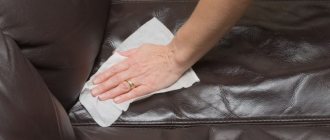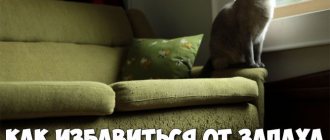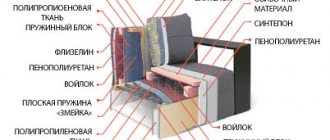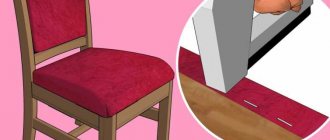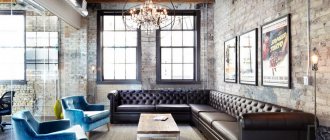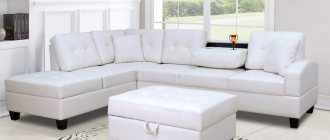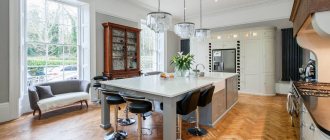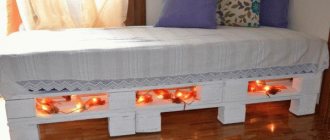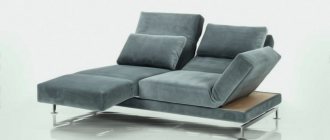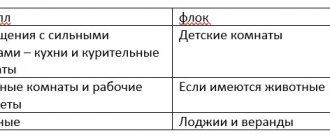Reupholstering a sofa at home or in a workshop - what to choose?
Reupholstering a sofa at home or in the workshop? What to choose? These issues must be resolved if you decide to repair your favorite sofa.
Where is it better, cheaper and better quality to do this kind of work?
Some people believe that such complex work can only be done in a workshop . And there are many arguments from specialists who believe that this procedure can only be performed efficiently on a production basis.
Others do not want to deal with the removal of large furniture and are ready to hire specialists at home.
Who is right? Let's discuss all the pros and cons of these options today.
Reupholstering a sofa at home
Pros:
- Cheaper than in a workshop. And this is understandable - the cost of renting production space does not need to be included in the price. True, not all manufacturers do this, but in any case, the cost can decrease very significantly;
- The cost of transporting furniture to the workshop and back is excluded from the estimate. And also the cost of lifting a sofa, for example, to the eighth floor. And the safety of furniture during loading and unloading, lowering and ascent is excluded. Which is just as important!
- You can watch the repair process in real time. Of course, there is no point in “standing above the soul” of the masters. But periodically taking an interest in the process, observing and monitoring it is an important point for the peace of mind of many clients.
- You will not be deprived of your favorite furniture for a long time. And you will not have to experience the inconvenience associated with disruption of your life and rest routine.
Minuses:
- For several days, and possibly weeks, strangers will be in your apartment. Therefore, someone from the family must be present nearby. This is not always convenient. And if you take into account the noise produced during work and the disorder, then before making a choice in favor of reupholstering a sofa at home, you need to take this point into account. This is especially important if you have small children or elderly people in your family.
- It is impossible to move part of the production equipment into the apartment. Therefore, it is not always possible to produce high-quality covers, especially complex ones. Difficulties may also arise with the installation of fittings and decor. As a result, the appearance of the sofa may not turn out the way you would like.
Reupholstering a sofa in the workshop
Pros:
- The quality of work, when using modern tools and equipment installed in the workshop, is much higher. The craftsmen working on your sofa are in a familiar environment, which also affects the quality of the work.
- There will be no strangers in your apartment. And you will be able to lead your usual lifestyle.
- In any case, no matter how carefully the craftsmen work, you will not have to clean up debris, scraps of material and dust after them .
- Communication with craftsmen is minimized. You placed an order, discussed the scope of work with the manager, and chose the fabric. The workers took your furniture and after some time brought it home, already updated.
Minuses:
- Furniture, in this case, will have to be transported. And in this process. as we have already said, it may be damaged. But if you have entered into an agreement with a good workshop, then careful treatment of your favorite sofa is guaranteed.
- You cannot monitor the progress of work and control it at all stages of repair. But you can visit the workshop and make sure that modern equipment is available. You can also view the catalog of completed works.
- In some cases, reupholstering a sofa at home will be cheaper than doing this work in a workshop. We have already discussed this above.
Now about the myths about reupholstering furniture at home:
1 myth. Dirt
Maybe. But it still depends on the company with which you enter into an agreement. This process, of course, is impossible without garbage at all. But, in the case of doing work from home, there is one small advantage. When disassembling furniture, its owners often find long-lost things: a fallen earring, a lost small document, a trinket dear to their hearts, etc.
And if we talk about dirt, then they are masters, in principle. litter no more. than movers. who take out your furniture.
2 myth. Time
This process will be long. if craftsmen sew upholstery in your apartment. We do it differently. After a designer and a craftsman visits your home to form an order and make measurements and calculations, we sew the upholstery covers in the workshop. In this case, the quality of work does not suffer and the time spent on work in the house is sharply reduced. It is possible to repair and reupholster the sofa during the working day.
3 myth. Quality
Many workshops scare customers with the fact that high-quality reupholstery can only be done using stationary, expensive tools (pneumatic tools: stapler and compressor). It is impossible to perform quality work with electric portable tools. This is wrong. Even for very large projects, we take these tools with us and carry out the work efficiently.
So why scare customers with this myth? Perhaps such masters have other reasons to hide their work from the eyes of clients...
Leave a request and we will answer all your questions
For a preliminary assessment, you can send photos on WhatsApp or Viber by phone +7 or attach them to the application form
Top 5 best fabric upholstery for a sofa
The service life of upholstered furniture depends not only on the design or transformation mechanism, but also on the material from which the upholstery is made. Nowadays, different types of coatings are used for finishing, which have their own characteristics and characteristics. In our article we will tell you which fabric is best to choose for a sofa in your home.
Selection criteria
There are generally accepted characteristics that indicate the quality of the finish and directly indicate its service life. Particular attention is paid to the following parameters:
- Color fastness. This characteristic determines the ability of the fabric to retain its original color during use - after washing or exposure to sunlight.
- Wear resistance. The criterion determines abrasion resistance. In the description of the material it may be referred to as the “Martindale test”. An indicator of more than 30 thousand revolutions is considered good.
- Density. Determines the number of threads per square centimeter of fabric. The higher the indicator, the higher quality the material is considered.
- Fire resistance. This quality characterizes the material’s resistance to fire. For furniture in the house, it is better to choose upholstery with fire resistance class 4 or 5.
- Stability. The ability of the fabric to stretch and shrink. The shrinkage index should be as close to 0 as possible.
Taking these parameters into account, we have compiled a rating of fabric upholstery that is best chosen for residential premises.
Flock
Cotton and polyester are used as the basis for flock. Then, pile is applied to the finished canvas using an electrostatic method. The result is a fabric that looks and feels like velvet.
Such upholstery for a sofa is much better than chenille or velor for use in the bedroom and kitchen. It does not absorb moisture, is very resistant to dust and has good light fastness. It is worth noting the high level of resistance to abrasion. Flock retains its original color and density throughout the entire period of use.
The disadvantage of upholstery fabric is that it is very susceptible to the effects of alcohol-based detergents.
Velours
This material is one of the most popular among buyers. This is due to the low cost of the fabric and good strength characteristics. It is also worth noting the environmental friendliness of velor fabrics: they are made from natural raw materials - cotton, wool and silk fibers.
The advantage of velor is the huge variety of appearance - there are smooth, embossed, shaped and many other types of fabric. It is thanks to this that you can easily choose upholstery for a sofa in the living room, in the office or even in the children's room.
Among the key characteristics of the material, it is worth noting its strength and safety for health. Separately, it is worth mentioning the softness of the fabric: it is pleasant to the touch and retains heat well.
Jacquard
It is a fabric with a large rapport - an ornament repeated over the entire area. A solid textured image is formed from threads of different thickness, composition and color.
The main advantage of jacquard is its increased strength. The material has a high level of wear resistance, thermal conductivity and environmental friendliness. In terms of its characteristics, it is not much inferior to natural and artificial leather.
The fabric is extremely easy to care for, so when using it you will not have to purchase additional detergents. If you don’t know what upholstery to choose for the sofa in the living room, then we recommend purchasing jacquard.
As for the disadvantages, it is worth noting the high cost, but this is easily compensated by the advantages of the material.
Chenille
The fabric is created by intertwining fibers and threads, resulting in an unusual pattern (the outward coloring resembles a caterpillar).
Chenille can be of three types: natural (obtained from cotton), artificial (with a predominance of viscose) or synthetic (from polyester or micropolyester). In its appearance and properties, the material is often compared to a tapestry.
The advantages of chenille include resistance to deformation and fading. The fabric is also antistatic, non-toxic and hygroscopic.
There are a lot of color options - they can be used as pre-dyed threads or dyed on a ready-made fabric.
Veronica
(925) 855-99-66
Our company offers services for partial reupholstery of your furniture.
Dear customers!
We are working as usual!
To calculate the repair or reupholstery of furniture, send photos in advance to email [email protected] or WhatsApp +7-929-929-48-28. We have a lot of upholstery materials, fillers, mechanisms and other elements necessary for complete or partial furniture repair!
HAPPY AUTUMN!!!
A common problem is when some minor element of furniture is hopelessly damaged, your money and time will be saved by partially reupholstering this element with various materials or the “original” material of your furniture, if possible.
Armrest reupholstery
What happened
*the armrests are upholstered in classic velor, which has proven itself and has been used by us for 10 years.
What was What became
*the armrest of the sofa was made practically “from scratch” - the edges were rounded, new foam was glued, covered with flock on flock of the 7th category.
What was What became
*parts of the armrests made of crumbled leatherette are upholstered in artificial leather of the 5th category.
What was What became
*armrests are upholstered in artificial leather with an imitation crocodile texture.
What was What became
*armrests are upholstered in 12th category flock, the color is matched to the pattern on the fabric of the sofa.
What was What became
*the armrest is covered with a modern large-weave matting.
Reupholstering of seats and individual elements of kitchen corners
What was What became
*kitchen corner seats are upholstered in artificial leather of the 5th category.
What happened
*the seats of the kitchen corner No. 1 are upholstered in artificial leather of the 5th category, the seat No. 2 is in modern matting.
What happened
*kitchen corner seats are upholstered in premium flock in a delicate menthol color.
What happened
*the sides and drawers of the hallway corner are decorated with artificial leather of the 5th category.
What was What became
*damaged elements of the kitchen corner made of artificial leather were reupholstered in artificial leather of the 5th category of the same color.
What was What became
*the seat of the kitchen sofa is upholstered in artificial leather of the 5th category. Made uniform for practicality - the load on the seam in the most used part of the sofa is eliminated.
What happened
What happened
*the seat of the kitchen sofa is upholstered in artificial leather in two colors, the chewed foam rubber has been restored.
What happened
What happened
*the seat of the kitchen sofa is upholstered in Smart Fabric flock - very dense, wear-resistant, and not afraid of any contamination.
Upholstery of seats and sofa cushions
What happened
*the sofa seats are upholstered in a modern matting, the color is matched to the color of the pattern elements on the backs of the sofa, the PPU seats are completely replaced with a new one of standard hardness.
What happened
What happened
*the sofa seats are upholstered in a new generation material - artificial suede with the effect - wear-resistant, thanks to the special coating, it is easy to clean, and no animal hair remains on it. Mustard color - matched in style to the natural wood in the interior. Part of the back was also restored - the dog chewed out a piece of the filling. The part is covered with artificial leather in the color closest to the remaining parts of the sofa.
What happened
*the seats of the corner sofa are upholstered in the new 2020 velor collection “Loft” - very dense on a thick base. This collection meets all modern interior design requirements. Each color includes at least three shades, which creates a “marbling” feeling.
What happened
*the back and seat (folding mattress) of the Malaysian sofa are upholstered in jacquard from the Samsara collection
What was What became
*the soft parts of the “Lancaster” sofa are upholstered in “breathable” nano-leather.
What was What became
*the seat of the Eurobook is upholstered in flock, the texture and color being maximally matched to the rest of the sofa. The dented spring block was replaced with Ellablock brand foam rubber - service life is 10 years without changes in characteristics, i.e. initial subsidence.
What was What became
*the seat of the corner sofa is upholstered in velor, matching the texture and color to the rest of the sofa as closely as possible. The dented spring block was replaced with Ellablock brand foam rubber - service life is 10 years without changes in characteristics.
What happened
*the seats of the corner sofa of the Atlant type are upholstered in artificial leather of the 5th category, matched in color to the base of the sofa.
What was What became
*unsuccessfully selected fabric on the seats and berth of the sofa (stains remain even from ordinary water) was replaced with flock on flock. This material is ideal for those who have children and pets. The fabric is easy to clean, and the color and texture hides even the most significant stains.
What happened
What happened
*the filling of two pillows is completely restored, similar to the shape of the third. Upholstered in classic Velvet Lux velor
What happened
*cushions (seats) from a sofa with a French folding bed are upholstered in Arpatek category 12 (Martindal test 1,000,000 cycles), color - light gold.
What happened
What happened
*the back cushions of the sofa are made of genuine rolled leather (which led to sad consequences after some time) and are upholstered in Mercury microfiber - a reliable, wear-resistant, thick-based fabric.
What was What became
*a new sofa seat was made - the spring block was replaced with polyurethane foam of standard hardness, the cover material was 5th category chinilla.
What was What became
*spring mattress on a wooden frame has been repaired and reupholstered in flock on flock.
What was What became
*the seat of the sofa is upholstered in artificial leather of the 7th category.
What was What became
*a damaged sofa seat made of genuine leather was reupholstered in artificial leather of the 9th category, which made it possible to significantly reduce the customer’s costs without loss of quality.
What was What became
What was What became
*seats of sofas with a French folding bed are upholstered in artificial leather of the 5th category.
What happened
*No. 1 - the rocking chair has acquired a new life - the cape is made of new polyurethane foam and modern matting, No. 2 - the seat of the children's play sofa is upholstered in category 7 flock.
Reupholstery of various parts of sofas, armchairs and beds
What was What became
*details of the head of the bed made of low-quality leatherette are tied using the “Carriage Screed” technology into artificial leather of increased wear resistance.
What happened
What happened
*the middle element of the corner sofa is upholstered in faux suede, the color is perfectly matched to the remaining parts of the sofa made of faux leather. The collection of artificial suede “Sofa” has a thickness of 4 mm with a backing, as well as 55,000 abrasion cycles (Martindal test), which characterizes it as a particularly wear-resistant material! In addition, the collection includes 15 modern and fashionable shades from pearl to wenge.
What happened
What happened
*the sofa has its backrests, armrests and sleeping area upholstered in 9th category artificial leather. The color is selected to the maximum; this artificial leather contains natural particles, which makes it more durable and visually as close as possible to natural leather. The seats are left in natural leather, the sides and back are in the “native” artificial leather.
What happened
What happened
*the corner sofa has been reupholstered in modern snow-white velor, the seat cushions have been completely replaced. The bottom and backs were left in artificial leather at the request of the customer, in order to save material and make it easier to wet clean the floor.
What happened
*the seat and armrest of the Eurobook are reupholstered in a modern matting.
What happened
*the armrests and sleeping area of the sofa are upholstered in 12th category flock, the bottom and side pillows are left in the “native” fabric.
What was What became
*the seat and part of the drawer are covered with anti-vandal flock of the 12th category.
What was What became
*the seat, armrests and back are upholstered in artificial leather of the 5th category, the bottom and back are left “original” in order to save material.
What happened
What happened
*the seat, armrests and back are upholstered in anti-vandal flock of the 12th category, the bottom and back are left “original”, in artificial leather.
What was What became
*the seat and bottom of the sofas are upholstered in artificial leather of the 5th category.
What happened
What happened
*for sofas made of genuine leather, only the seats and the upper part of the armrest are partially reupholstered in artificial leather of the 5th category, matched to the maximum color.
What happened
What happened
*partially drawn into flock on flock. In order to reduce the cost of work and the consumption of material, the following fabrics were left in the same fabric: the backdrop, the drawer side and the cherry part of the armrests.
Partial reupholstery of chairs and semi-chairs
What happened
*the backs of the semi-chairs are upholstered in jacquard, the shade is matched to the seat, the pattern is most suitable for such furniture.
What happened
*seats of chairs and semi-chairs are upholstered in modern textured velor from the Elf collection.
What happened
*No. 1 - chair seats were reupholstered with polyurethane foam replaced with jacquard; No. 2 - in Arpatek artificial leather of the 12th category (Martindahl test 1,000,000 cycles), manufactured in the Netherlands; No. 3 - the back is reupholstered in a similar way, also in Arpatek; No. 4 - the bar stool seat is upholstered in top-class genuine leather, made in Italy.
Decor of soft and hard parts of furniture
What was What became
*part of the side of the chair, damaged by the animal, was decorated with an overlay with elements of fabric taken from the invisible part of the chair, which eliminated its complete reupholstery and significantly affected the cost of the work. The second sidewall is decorated in the same way for symmetry and a harmonious look.
What was What became
*the damaged part of the armrests of the chair is decorated with flock.
What happened
*the upper part of the sides of the sofa is drawn in flock on flock, the color is chosen as close as possible to the color of the pattern on the main fabric.
What happened
What happened
*the corner element, damaged by fire, was restored and became the original element of the sofa - the damaged laminated chipboard was decorated with artificial leather of the 5th category, the damaged soft element was drawn into flock, matched as closely as possible to the color of the pattern elements of the main fabric of the sofa.
What happened
What happened
*damaged furniture elements are decorated with a different material.
Partial reupholstery of medical furniture and exercise equipment elements
What was What became
*the exercise machine is partially covered in Arpatek artificial leather of the 12th category (Martindahl test 1,000,000 cycles) in a contrasting red color. This saved money on a full reupholstery and added a bright note to the product.
What was What became
*in the front part of the massage table there is a hole for the face and a closing element.
What was What became
*molded armrests of the chair for blood sampling are covered with Denkart artificial medical leather, made in Germany. To carry out such a reupholstery, a special pattern was made and the design of the armrests was modified to allow fastening of the material.
What happened
*the armrests of the ENT chair and the seat of the doctor’s chair are upholstered in Denkart medical artificial leather, made in Germany.
What was What became
*the back of the dental chair is also reupholstered by creating a cut in the same material and color as the previous chair (ordered from the same dentistry).
What was What became
*the seat of the ENT chair was partially reupholstered - the damaged parts of the upholstery were replaced with Denkart medical artificial leather, made in Germany.
What was What became
*the seat of the chair for blood sampling is upholstered in furniture artificial leather of the 5th category.
Partial reupholstery of car elements
What happened What happened What became
*No. 1 - the front passenger seat of a Mercedes-Benz Sprinter minibus is reupholstered in a 12th category flock, from which even the oil can be cleaned; No. 2 - a damaged element (velor insert) of a BMW car seat was replaced with a new, modern velor.
What was What became
What was What became
*seats, headrest and armrests in the intensive care vehicle are upholstered in Arpatek artificial leather of the 12th category (Martindahl test 1,000,000 cycles).
What was What became
*Honda Civik armrests are upholstered in automotive artificial leather, which is not afraid of ultraviolet radiation.
What happened
What happened
*the cabin of the Skania truck is covered with artificial leather of the 5th category with imitation crocodile leather.
Partial reupholstery of office chairs
What was What became
*the seat of the office chair is upholstered in artificial leather of the 5th category.
Pros and cons of different fabrics
The choice of upholstery should be approached very responsibly in order to avoid unnecessary expenses in the future. It is important to evaluate not only the quality and appearance of the product, but also its functionality. So, jacquard will fit perfectly into the living room thanks to its beautiful pattern. But if pets live in the house, they will quickly ruin the fabric with their claws. Below are the pros and cons of popular sofa upholstery materials.
Gozhka
Matting is a rough fabric with a large checkerboard weaving pattern. It is made from both natural and synthetic fibers. Refers to budget upholstery options.
Table 1. Pros and cons of matting
| + | — |
| · has high wear resistance; · universal: suitable for living room, bedroom, kitchen and office; · hypoallergenic; · unpretentious in care; · it's cheap. | · prone to snags (cats love to sharpen their claws on it); · fades over time under the influence of ultraviolet radiation; · Rough to the touch. |
Flock
Flock is another budget upholstery option. It is made by spraying microvilli - synthetic or natural - onto the base. The fabric turns out to be slightly velvety, so it creates a feeling of warmth and comfort in the home.
Table 2. Pros and cons of flock
| + | — |
| · does not tear under the influence of cat claws; · Easy to clean from stains using water and soap; · does not “salt” over time; · does not “dumb” when cooled, therefore suitable for verandas and balconies; · often treated with moisture-proof impregnations; · has good breathability; · pleasant to the touch. · affordable. | · wears out over time; · absorbs foreign odors; · electrified; Can attract dust and pet hair; · deteriorates under the influence of alcohol-containing substances. |
Velours
Velor is a material with a very dense pile that looks like suede and feels like velvet. In its production, weaving and fluffing thread technologies are used. As a rule, velor combines natural and synthetic fibers.
Table 3. Pros and cons of velor
| + | — |
| · does not stretch; · does not shrink; · looks expensive, luxurious, elegant; · soft and pleasant to the touch; · breathes well; · practically does not accumulate foreign odors; · Resistant to fading in the sun. | · in the absence of a protective cover, the pile wears out quickly; · difficult to care for (stains are difficult to remove with soap and water, and household chemicals cause the material to deteriorate); · expensive. |
A special type of velor fabric is microvelor. The length of its villi does not exceed 1 mm. Microvelor has higher wear resistance and breathability. The pile does not wear out for years. Unfortunately, there are many fakes of this material on the market.
Chenille
Translated from French, chenille means “caterpillar.” In the production of such upholstery, combed fluffy fibers are twisted and woven into a smooth fabric. Chenille is considered one of the best materials for a children's room.
Table 4. Pros and cons of chenille
| + | — |
| · durable and wear-resistant; · thanks to its softness, it is very pleasant to the touch; · almost does not absorb foreign odors; · hypoallergenic; · does not wrinkle or stretch; · has a rich palette of colors and design solutions. | · strongly attracts dust, wool, hair; · prone to forming snags from pets' claws; · absorbs moisture; · easy to care for (only dry cleaning allowed). |
Velveteen
In the last century, corduroy was very popular in the production of clothing, and today it is used in the furniture industry. It is a fabric made of very thick pile with characteristic longitudinal scars. Typically, the fibers consist of a mixture of cotton and rayon or cotton and polyamide.
Table 5. Pros and cons of corduroy
| + | — |
| · not subject to creasing; · has a rich appearance; · thanks to its velvety structure, it is pleasant to the touch; · Retains heat for a long time. | · strongly attracts debris and dust; · electrified; · prone to shrinkage; · capricious in care (only dry cleaning is allowed); · wears out quickly; · expensive. |
Microvelvet is made using the same technology as corduroy, but has a higher pile density. This fabric is easier to care for. In particular, it can be washed with soap and water.
Microfiber
Microfiber is a synthetic fabric made from ultra-thin polyester and polyamide fibers. The Japanese invented it. Externally, microfiber resembles natural material, but is cheaper.
Table 6. Pros and cons of microfiber
| + | — |
| · allows air to pass through well; · does not accumulate foreign odors; · has a rich variety of colors and patterns; · undemanding in care; · does not fade under the influence of UV radiation; · does not deform, does not wear out, does not become covered with pellets; · inexpensive compared to natural sofa upholstery. | · Causes allergic reactions in some people; · accumulates static electricity; · strongly absorbs moisture; · “gets salty” over time; · often looks cheap. |
Jacquard
Jacquard is an ideal solution for those who appreciate classic style in the interior. It is a rigid upholstery fabric with a complex weave of threads in a patterned pattern.
Table 7. Pros and cons of jacquard
| + | — |
| · has high wear resistance and durability; · not subject to deformation, including due to temperature changes; · does not fade under the influence of UV radiation; · looks expensive; · retains heat well in winter and cool in summer; · hypoallergenic. | · prone to forming snags; · easy to care for (only dry cleaning allowed); · has a hard and slippery surface, which not everyone likes; · is very expensive. |
Cost of work
| Type of sofa for reupholstery (excluding cost of materials) | Cost of work, in rubles |
| Sofa with wooden armrests (upholstery, upholstery) | From 3000 rub. |
| Sofa with soft armrests (upholstery, upholstery) | From 3500 rub. |
| Corner sofa (upholstery, upholstery) | From 6000 rub. |
| Leather sofa, set (upholstery, upholstery) | After the master's assessment |
| Leather corner sofa (upholstery) | After the master's assessment |
| Upholstery materials: | Prices, in rubles |
| Textile | from 700 rubles/p.m. |
| Leather | from 35 USD/sq.m. |
| Leather substitute (leatherette) | from 600 rubles/p.m. |
| Technological fabric | from 30 rubles/p.m. |
| Sintepon | from 40 rubles/p.m. |
| Foam rubber | from 100 rubles/p.m. (depending on thickness) |
